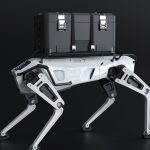The James Webb Space Telescope (JWST) continues to unveil secrets of the cosmos, recently identifying enigmatic celestial objects dubbed “Little Red Dots” (LRDs). These discoveries offer new insights into the early universe, particularly concerning the formation of supermassive black holes. The detection of LRDs highlights JWST’s pivotal role in advancing our understanding of astronomical phenomena.
Previous observations had hinted at unusual objects in the high-redshift sky, but JWST’s advanced capabilities have allowed astronomers to study these objects in greater detail. Earlier theories suggested that such findings could challenge existing cosmological models, but recent analyses provide a more coherent explanation.
What Are the Little Red Dots?
Little Red Dots are small, red objects observed in the high-redshift regions of the sky, appearing shortly after the Big Bang. A comprehensive study identified 341 LRDs spanning redshifts from 2 to 11, with a significant concentration around 1.5 billion years post-Big Bang. These objects are characterized by their abundance and distinct red coloration, which has intrigued astronomers.
How Do They Relate to Supermassive Black Holes?
Research suggests that many LRDs may harbor growing supermassive black holes (SMBHs). Spectroscopic data from surveys like RUBIES indicate that approximately 70% of LRDs exhibit rapidly rotating gas, a signature of accretion disks around SMBHs. This connection implies that LRDs could play a critical role in understanding black hole growth in the early universe.
Why Do They Disappear After 1.5 Billion Years?
The prevalence of LRDs declines significantly after 1.5 billion years post-Big Bang. One hypothesis is the inside-out growth model, where star formation and black hole growth begin in a galaxy’s central regions and move outward over time. As a result, the conditions that produce LRDs become less common, leading to their reduced numbers.
A comparison with earlier studies shows that initial interpretations of JWST’s LRD discoveries posed challenges to cosmological theories. However, the current understanding that LRDs are likely active galactic nuclei provides a more consistent framework, alleviating previous concerns about model discrepancies.
“We’re confounded by this new population of objects that Webb has found. We don’t see analogs of them at lower redshifts, which is why we haven’t seen them prior to Webb,”
stated Dale Kocevski, lead author of the study. These findings underscore the dynamic nature of scientific inquiry, where observations lead to evolving theories and models.
The study emphasizes the significance of LRDs in shedding light on obscured black hole growth during the early universe. As JWST continues its mission, further observations and data will enhance our comprehension of these intriguing objects. The ongoing research promises to refine our understanding of galaxy and black hole evolution, solidifying JWST’s contribution to modern astronomy.










